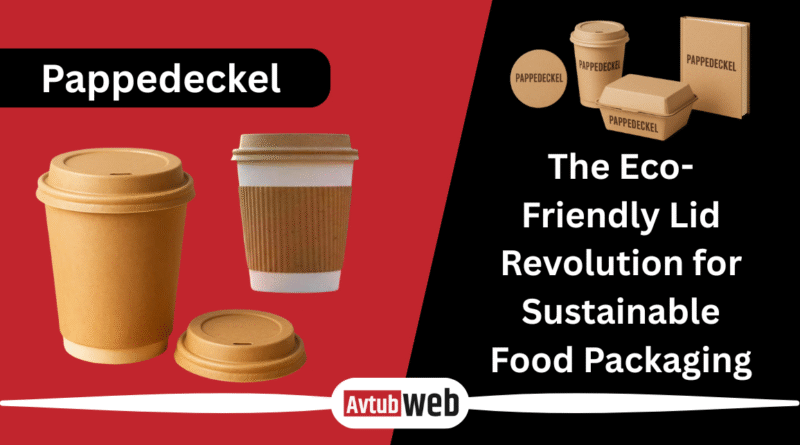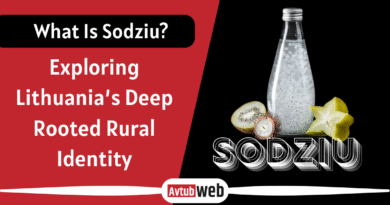Pappedeckel: The Eco-Friendly Lid Revolution for Sustainable Food Packaging
Sustainability is changing how the world thinks about packaging, and the Pappedeckel has become a surprising hero in this shift. At first glance, it may seem like nothing more than a small cardboard lid, but its role in reducing plastic use and promoting responsible food packaging is gaining attention. Consumers are increasingly drawn to packaging that supports their values, and businesses are responding by adopting materials that are recyclable, biodegradable, and easy to handle.
The Pappedeckel fits perfectly into this movement, offering an alternative that balances practicality with responsibility. In the sections ahead, we will look at what Pappedeckel is, how it came about, the way it is made, its common uses, and how it compares with traditional packaging. We will also examine its impact on sustainability, its innovative applications, and its potential to transform the future of food packaging.
What is Pappedeckel? Definition and Concept
Pappedeckel is a simple yet effective packaging solution designed to cover containers, especially those used for food and beverages. The name comes from German, meaning “paper lid” or “cardboard lid,” which describes its design accurately. These lids are usually made from sturdy paperboard that can be plain, printed, or coated with biodegradable layers to resist moisture and grease. What makes them different from plastic lids is their lightweight nature and ability to fit easily into existing recycling systems.
For many businesses, Pappedeckel is more than just a lid; it is a way to show commitment to sustainability while still meeting customer needs. Consumers are often quick to notice packaging choices, and the cardboard lid sends a clear signal that a brand is taking responsibility. With more people asking for packaging that reduces waste, Pappedeckel is growing in popularity across industries, from bakeries and cafés to large meal-prep companies.
History and Origin of Pappedeckel
The idea of covering food containers with paper or cardboard has been around for decades, but Pappedeckel, as a distinct product, has roots in Germany. In the late 20th century, when conversations about reducing plastic waste started gaining momentum, companies began looking for alternatives that could be mass-produced, affordable, and practical. Germany already had strong recycling systems in place, which made it easier to introduce cardboard packaging solutions.
Over the years, Pappedeckel evolved in both design and function. Manufacturers began experimenting with coatings to handle liquids and grease, and printing techniques improved, allowing businesses to brand their lids effectively. The rise of eco-awareness among European consumers helped push adoption further. Today, while Germany remains a key user, the concept has spread globally as more regions adopt stricter regulations on single-use plastics.
Materials Used in Making Pappeldeckel
The strength of Pappedeckel lies in the materials used to make it. Most lids are produced from high-quality cardboard or paperboard, which may come from virgin sources or recycled fibers. To make them suitable for food packaging, manufacturers often add a thin biodegradable coating, such as plant-based polymers or water-based barriers, to protect against grease or liquid seepage. Printing is usually done with food-safe, biodegradable inks to maintain safety standards.
The choice of materials directly influences how the lids can be disposed of. Some versions are fully recyclable in paper waste streams, while others are compostable if local facilities support it. This flexibility allows businesses to choose the version that best matches their environmental goals and regional waste systems.
How Pappedeckel is Manufactured
Producing Pappedeckel involves a carefully structured process that balances efficiency with quality. It starts with sourcing the right grade of cardboard, which is then cut into precise shapes and sizes using die-cutting machines. These shapes are sometimes coated with biodegradable layers before or after cutting, depending on the design. Printing is added at this stage if branding or decoration is required.
The pieces are then formed slightly to fit the rim of containers, and quality checks are carried out to confirm durability, fit, and barrier performance. Manufacturers often recycle any offcuts from this process to reduce waste.
Manufacturing Steps Table:
| Step | Description |
| Material sourcing | Select paperboard, recycled or virgin, suitable for food safety |
| Die-cutting | Cut sheets into lid shapes |
| Coating | Apply plant-based or biodegradable barriers for liquid resistance |
| Printing | Add branding or product information |
| Forming | Shape lids slightly to fit containers |
| Quality check | Confirm strength, size, and safety |
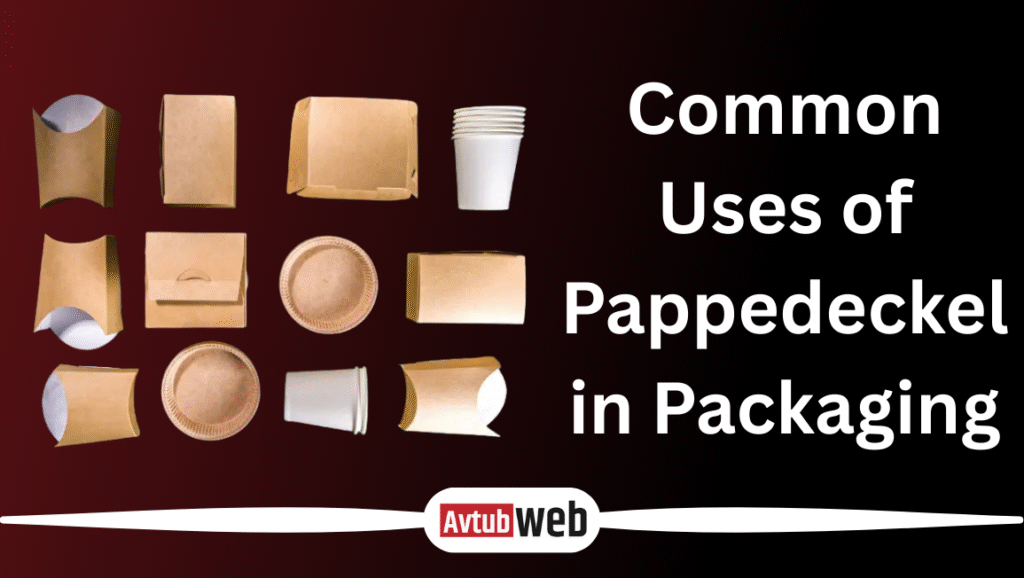
Common Uses of Pappedeckel in Packaging
Although Pappedeckel may seem like a niche item, its uses are widespread. It is commonly applied as a lid for cups of yogurt, cream, sauces, and desserts. Bakeries and cafés use it to cover boxes or disposable cups, while artisanal producers find it suitable for jars of jam, spreads, or pickles. Because the lids are light, they also reduce transportation costs, which benefits companies shipping products in bulk.
Beyond food, these lids are sometimes used in creative packaging for gifts or crafts, as they are easy to print on and decorate. For businesses, the versatility of Pappedeckel makes it a smart solution for both functional and marketing purposes.
Pappedeckel in the Food and Beverage Industry
The food and beverage industry has embraced Pappedeckel as a reliable replacement for plastic lids. Brands across Europe, North America, and Asia are experimenting with different sizes and coatings to meet their specific needs. For example, ready-to-eat meal companies use Pappedeckel to cover compostable bowls, while breweries use them to seal specialty bottles. Bakeries have also adopted the lids to give pastry packaging a rustic yet professional look.
Statistics show that 54% of consumers prefer products with sustainable packaging, and many are willing to pay more for eco-friendly alternatives. By using Pappedeckel, businesses not only cut down on waste but also align themselves with consumer expectations, which can improve customer loyalty and brand image.
Benefits of Pappedeckel over Traditional Packaging
The shift from plastic lids to Pappedeckel is not only about appearances—it brings practical benefits too. Traditional packaging, especially plastic, often requires fossil fuels and complex recycling processes, many of which are unavailable in local waste systems. In contrast, Pappedeckel is made from renewable resources, giving it an immediate advantage. Its biodegradable nature means that even if it ends up outside recycling streams, it will break down naturally over time, unlike plastics that linger for centuries. Businesses also find that Pappedeckel costs less to ship because of its lighter weight, which lowers transportation emissions.
From a branding perspective, the surface of cardboard is easy to print on, making it a natural choice for businesses that want to display their logos or messages clearly. For consumers, the appeal lies in knowing that they are holding packaging that aligns with their values, giving them a sense of participation in the broader sustainability movement.
Environmental Impact of Pappedeckel on Sustainability
The environmental footprint of packaging is one of the biggest concerns facing industries today. Plastic lids and containers make up a large portion of single-use waste, and many never get recycled. According to the U.S. Environmental Protection Agency, paper and cardboard packaging had a recycling rate of around 81% in 2018, compared to less than 10% for plastics. This alone highlights why Pappedeckel has such promise—it belongs to a material category that already performs much better in recycling systems. On a global scale, single-use plastics account for about 40% of all plastic waste, a staggering figure that continues to grow as more products enter the market.
Replacing even a fraction of this with cardboard alternatives like Pappedeckel could make measurable differences in reducing landfill waste and ocean pollution. For businesses, adopting Pappedeckel is more than a trend; it is a step toward cutting emissions, reducing landfill dependency, and meeting corporate sustainability goals.
Pappedeckel and Plastic Waste Reduction
Plastic waste reduction is one of the strongest arguments for adopting Pappedeckel. Unlike many plastics, which require costly and specialized facilities to recycle, cardboard lids can be handled through regular paper recycling channels in most developed regions. The European Union has already agreed on plans to make all packaging recyclable or reusable by 2030, and many companies are preparing ahead of time by phasing out plastics. Pappedeckel helps businesses meet these upcoming requirements while also giving them an edge with eco-conscious consumers.
Each lid that replaces a plastic one may seem small, but in industries that produce millions of units per year, the savings in waste are substantial. Reducing plastic also means fewer microplastics released into ecosystems, an issue that has been linked to both environmental harm and potential human health risks.
Creative and Decorative Uses of Pappedeckel
While its main purpose is practical, Pappedeckel has also become a favorite material for creative uses. Many people repurpose these lids for crafts, such as coasters, place cards, or personalized decorations for events. Weddings and eco-friendly gatherings often feature cardboard elements that add a rustic charm without contributing to waste. In schools and homes, children use them as canvases for painting or small art projects because they are inexpensive and easy to work with.
The surface of a Pappedeckel can be printed, drawn on, or stamped, which makes it adaptable to countless decorative ideas. For businesses, offering Pappedeckel packaging with creative potential can even enhance customer engagement, as people enjoy repurposing items that would otherwise be discarded.
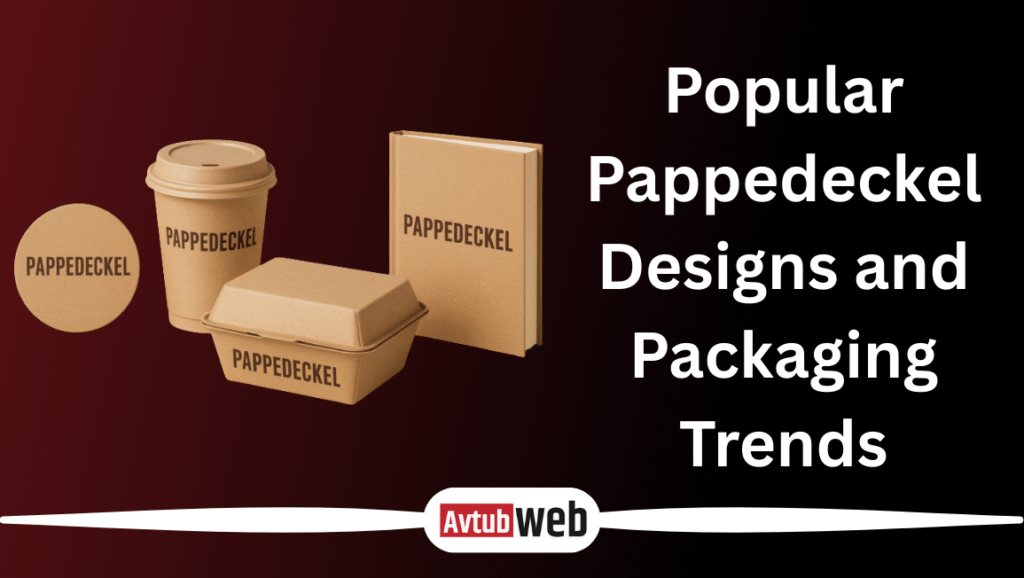
Popular Pappedeckel Designs and Packaging Trends
Design trends in packaging often reflect consumer lifestyles, and Pappedeckel is no exception. Minimalist designs with clean lines and natural colors are becoming more common, as they project both simplicity and sustainability. Many companies are choosing earthy tones that align with the eco-friendly message. Another growing trend is customization, where businesses print logos, QR codes, or patterns directly on the lids to stand out on shelves.
With biodegradable inks now widely available, branding no longer compromises the environmental profile of the product. Interactive packaging, such as lids with scannable codes for promotions or product information, is also gaining popularity. These trends show how Pappedeckel can be more than just a lid; it can also serve as a marketing tool that connects brands with their customers.
Pappedeckel in Different Cultures and Global Adoption
Different cultures have embraced Pappedeckel in unique ways. In Germany, where the product originated, it is widely used for homemade jams and preserves, adding both practicality and a decorative touch. Across parts of Asia, cardboard lids are becoming popular in tea and spice markets, where packaging often reflects traditional values of balance with nature.
In North America, adoption is spreading gradually, with many artisanal food brands and restaurants leading the charge. The success of Pappedeckel in any given region often depends on how strong the local recycling or composting infrastructure is. Countries with well-developed waste management systems tend to adopt these solutions more quickly. Over time, as governments worldwide strengthen rules on plastic reduction, Pappedeckel is expected to see more widespread use across industries and cultures.
Challenges in Implementing Pappedeckel Solutions
Switching from plastic to Pappedeckel is not always simple. One major challenge is performance, especially for products that need strong resistance to liquids or oils. While coatings help, they sometimes reduce the recyclability of the lid if not carefully designed. Cost can also be higher in the short term, as businesses may need to adjust equipment or source new suppliers. Another issue is consumer awareness; not everyone knows what Pappedeckel is or how to dispose of it properly.
Educating customers becomes just as important as adopting the product itself. Finally, the availability of recycling or composting facilities differs across regions, which can limit the effectiveness of the solution. These challenges are real, but companies that invest in better materials, improved designs, and customer education are finding ways to overcome them.
How Companies Are Using Pappedeckel Successfully
Several businesses have already proven that Pappedeckel can work in real-world packaging. A bakery chain in Europe replaced its plastic box lids with Pappedeckel and saw strong customer support, with many appreciating the eco-conscious change. A meal-prep service switched to compostable containers with cardboard lids, aligning perfectly with the values of health-conscious customers who also care about sustainability. Organic snack companies are using Pappedeckel to seal nut jars, giving their products a clean and eco-friendly appearance on shelves. Even breweries have started experimenting with cardboard lids as bottle caps for specialty products, emphasizing their artisanal identity. These examples show that when implemented thoughtfully, Pappedeckel can fit into diverse industries while strengthening brand identity and consumer trust.
Recycling and Sustainability of Pappedeckel
Recycling is one of the strongest points in favor of Pappedeckel. Since it is made primarily of cardboard, it can usually enter regular paper recycling streams without complications, provided it is free from heavy contamination. Some versions are also compostable, breaking down naturally in industrial composting facilities. Manufacturers often prioritize sustainable sourcing as well, choosing recycled fibers or FSC-certified cardboard to further improve the product’s profile.
The key to maximizing sustainability lies in the entire lifecycle—from sourcing and production to disposal. By focusing on recyclable and compostable designs, Pappedeckel contributes to a circular economy, where materials are reused instead of being wasted.
Buying Guide: Choosing the Right Pappedeckel Products
When buying Pappedeckel for your business or personal use, choosing the right product depends on several factors. The lid should match the size and shape of the container, so accurate measurements are important. For food products, think about whether the contents are dry, oily, or liquid, since different coatings may be required. Some manufacturers offer plain lids, while others provide custom printing, which can add value for branding.
Checking certifications such as compostable or FSC labels helps confirm environmental claims. It also pays to compare suppliers to find reliable sources that deliver consistent quality. For businesses, testing a sample batch before a full purchase is a smart way to confirm that the lids perform as expected.
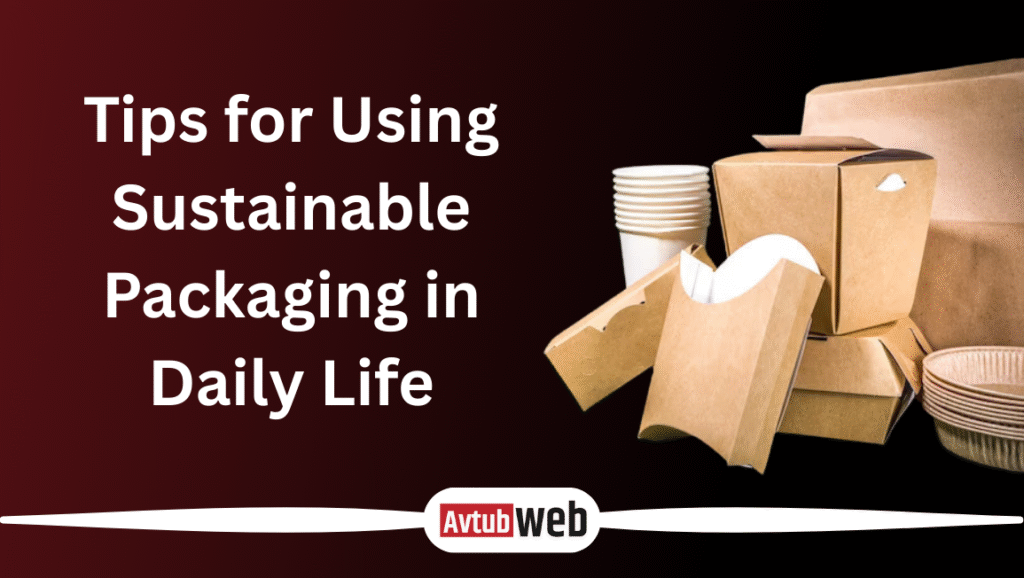
Tips for Using Sustainable Packaging in Daily Life
Adopting sustainable packaging doesn’t stop at the business level; individuals can make small changes too. When shopping, choose products that use recyclable or compostable packaging, including Pappedeckel-covered containers. Recycle or compost the lids after use whenever possible. Reusable bags, jars, and bottles also cut down on single-use waste. Supporting brands that actively use eco-friendly packaging sends a clear message to the market.
At home, creative repurposing can extend the life of cardboard lids, whether as small coasters, labels, or craft materials. Simple choices like these reduce personal waste and contribute to a culture that values sustainability.
The Future of Sustainable Food Packaging with Pappedeckel
The future of packaging is set to be shaped by sustainability, and Pappedeckel is positioned to play a key role. As more governments enforce rules on reducing plastics, businesses will be looking for practical alternatives, and cardboard lids are likely to gain even more attention. Advances in material science will improve coatings and barriers, allowing Pappedeckel to handle a wider range of foods. Digital printing and interactive packaging will also make it more attractive for marketing. For consumers, this means seeing Pappedeckel more often in everyday purchases, from takeout meals to supermarket shelves. The long-term goal is clear: reduce dependency on single-use plastics and create packaging systems that work in harmony with the environment.
FAQs About Pappedeckel
1. What is a Pappedeckel?
Pappedeckel is a cardboard lid used to cover food containers like cups, jars, and bowls. It’s eco-friendly and often recyclable or compostable.
2. Why is Pappedeckel considered eco-friendly?
It’s made from paper or cardboard, which comes from renewable resources. Many types can be recycled or composted, reducing waste compared to plastic lids.
3. Can Pappedeckel be used for hot foods and drinks?
Yes, many versions are designed with coatings that can handle hot items like soups or coffee cups. It depends on the material and coating used.
4. Is Pappedeckel safe for food packaging?
Absolutely. Manufacturers use food-safe cardboard, inks, and coatings to make sure it’s hygienic and safe to cover food and drinks.
5. How is Pappedeckel different from plastic lids?
Plastic lids are usually made from fossil fuels and take hundreds of years to break down. Pappedeckel is lighter, biodegradable, and recyclable, making it a greener choice.
6. Can Pappedeckel be recycled at home?
Yes, if it’s clean and free of food residue. Most recycling systems accept paperboard, so you can usually place it in your paper recycling bin.
7. Are all Pappedeckel lids compostable?
Not always. Some have compostable coatings, while others may not be. It depends on the material used, so checking the product label helps.
8. What foods are best packed with Pappedeckel lids?
They’re great for yogurts, sauces, desserts, soups, bakery items, and even drinks. Businesses also use them for jams, spreads, and snack packaging.
9. Can businesses print their logo on Pappedeckel?
Yes, one of the big advantages is that Pappedeckel can be easily printed with branding, designs, or product information using eco-friendly inks.
10. Does using Pappedeckel really reduce plastic waste?
Yes. Every plastic lid replaced by a cardboard lid helps cut down on single-use plastic waste, which is one of the biggest contributors to pollution.
11. How strong is a Pappedeckel lid?
Despite being lightweight, it’s surprisingly sturdy. With coatings, it can resist moisture, grease, and even light pressure, making it practical for everyday use.
12. Is Pappedeckel more expensive than plastic lids?
In some cases, yes, because eco-friendly production costs can be higher. But many businesses see it as an investment in sustainability and customer trust.
13. Can Pappedeckel be used outside of food packaging?
Yes. People use them for crafts, decorations, coasters, or even creative DIY projects. Their shape and material make them versatile.
14. Which countries use Pappedeckel the most?
It started in Germany and is widely used across Europe. But it’s spreading quickly worldwide as more businesses move away from plastic packaging.
15. What is the future of Pappedeckel?
The demand for sustainable packaging is growing, and Pappedeckel is expected to play a big role. As technology improves, we’ll see stronger, more versatile, and even cheaper versions on the market.
Conclusion
Pappedeckel may be small in size, but its impact on sustainable packaging is growing rapidly. From its origins in Germany to its global adoption, this simple cardboard lid is changing the way businesses and consumers think about packaging. Made from renewable materials, recyclable in most systems, and customizable for branding, it offers both practical and environmental benefits. Businesses are already proving their value, and consumers are responding positively to the change. Challenges remain, but innovation and commitment are pushing Pappedeckel into the spotlight as a leading solution for eco-friendly packaging. As the world continues to address plastic pollution and climate concerns, Pappedeckel represents a practical and promising step toward a cleaner future.
